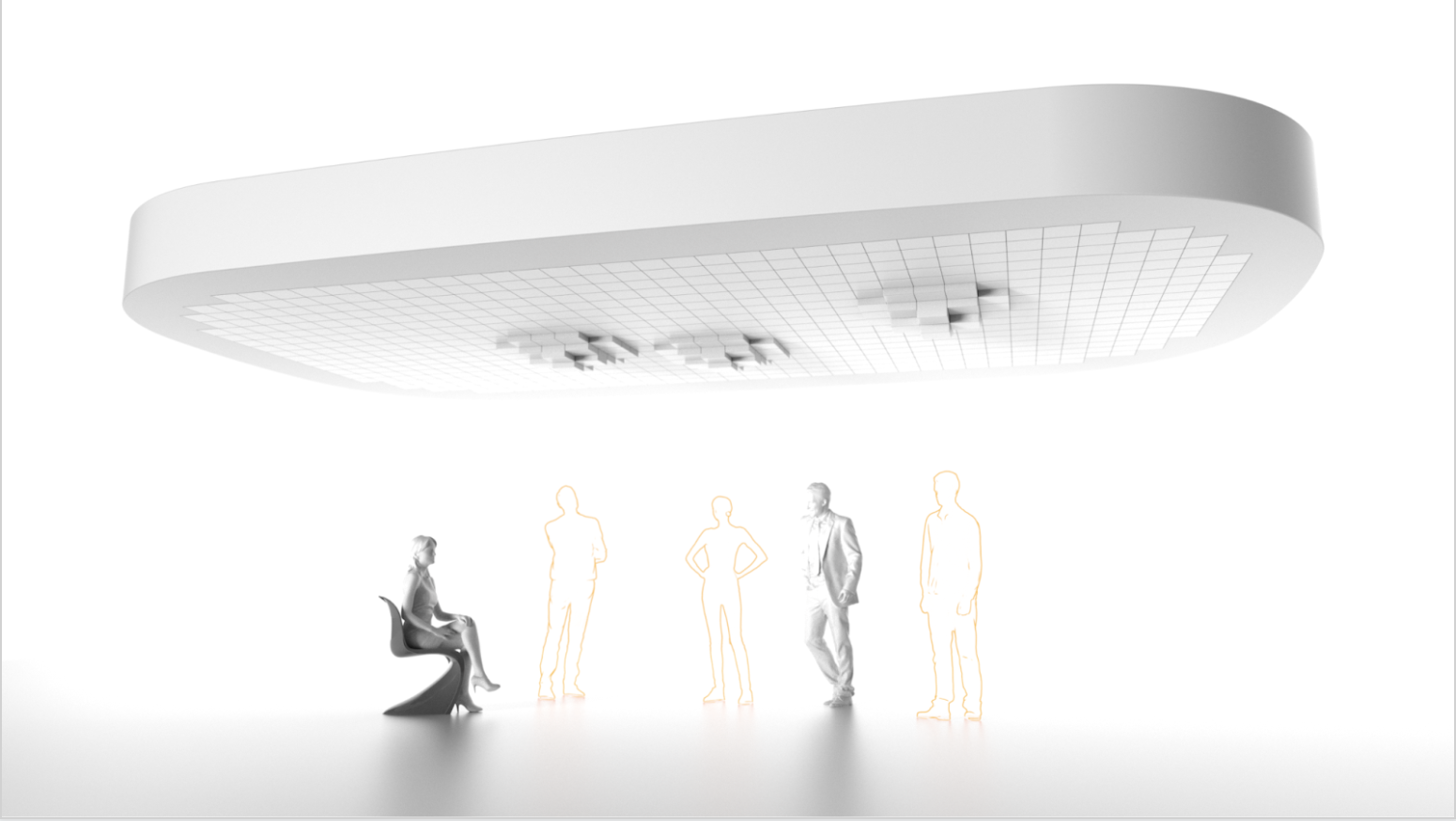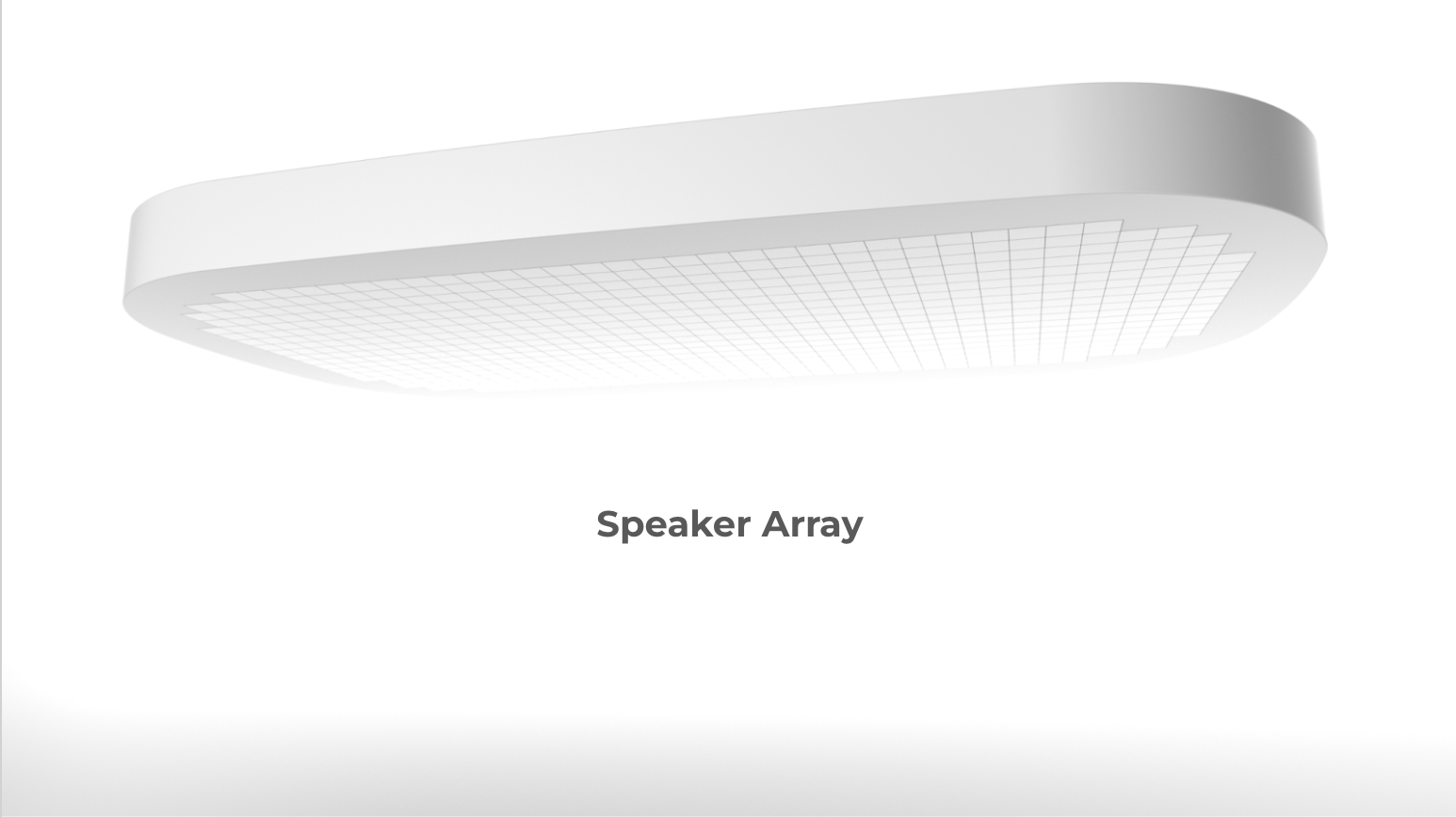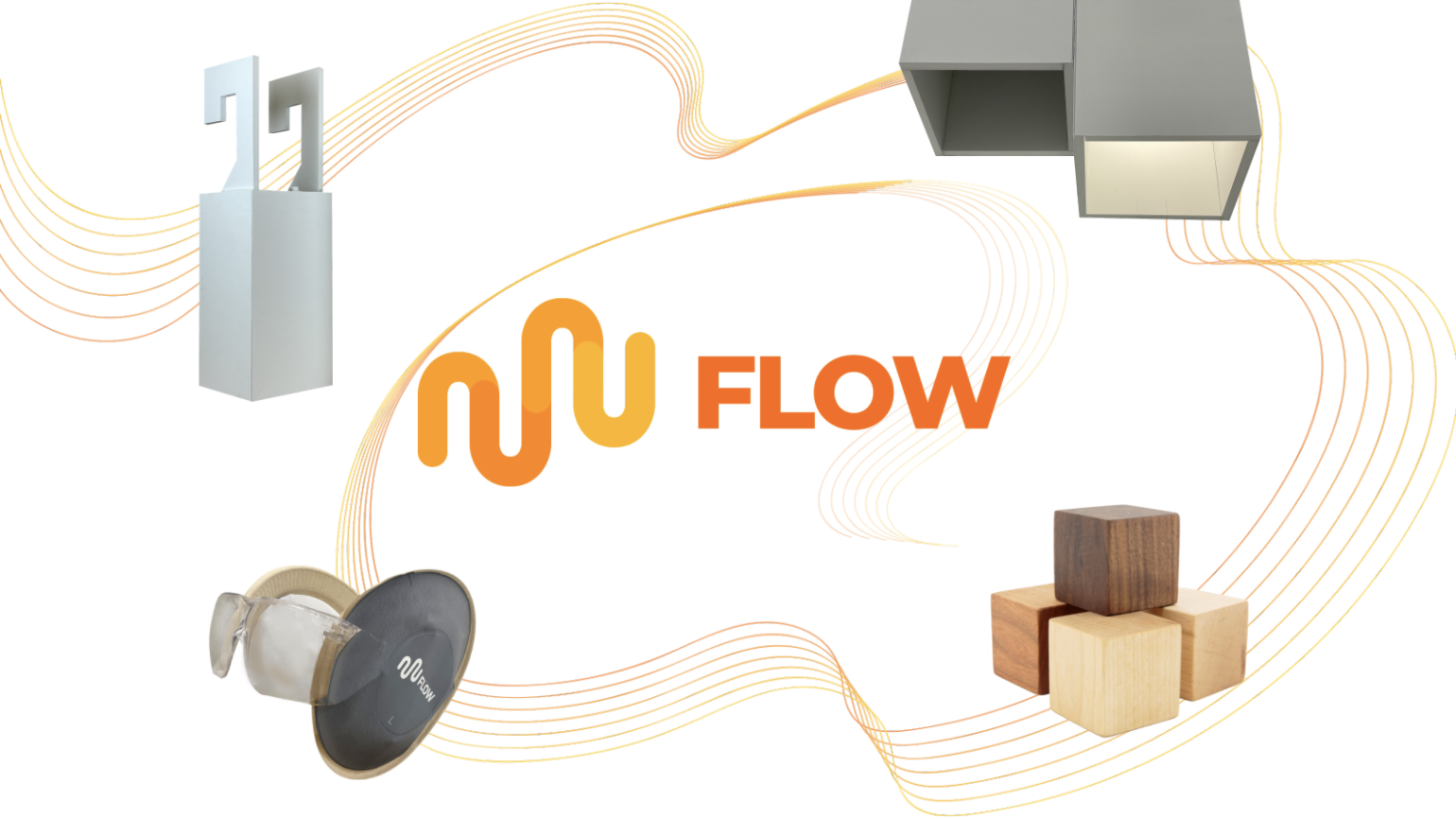
“How Might We collaborate
even we are not in the same space?”
FLOW - Spatial audio experience
FLOW creates a collaborative experience that bridges virtuality and physicality by using spatial audio, it also helps to switch between work mode and non-work mode by breaking invisible boundaries through physical interactions.
Project Type: Service Design/ Product Design, IIT ID Team Project
Duration: 15 Weeks (Sep 2021- Dec 2021)
My Role: Research. UX Design. Prototype. Video Edit
Location: Chicago
Teammates: Sylvia Kim, Sara Park, William Chen
OVERVIEW
Problem
During the pandemic, working from home became mainstream and people gradually realized that remote working is feasible. However, existing products/services focus on visuality overlook the auditory experience. In addition, different users have different needs, and a singular standard does not meet the needs of all people.
Solution:
Our team created mobile audio in the workplace allowing users to be immersive in collaboration through visuality and auditory thus increasing communication efficiency.
In Flow, the light can be illuminated when the user has a question through the bio-sensor on the bracelet which supports collaboration for better communication and engagement.
We leveraged drawers as a dimensional transition medium to cross the invisible boundary- switch the mental level into the working state.
Concept Role Play Video:
Design process
RESEARCH
Road to Virtuality
Define Innovation Opportunities
Through a wealth of secondary sources,
we learn about changes in work systems, the use of technology in our lives, iterations of interaction, and innovations in mobility.
In almost a century of history, we see many overlapping parts and identify trends and innovations in the future. There are four areas we need to focus on: Collaboration, Virtual experience, Hybrid working, Beyond the screen interactivity.
Interview Objectives
Inability to change team mode and personal mode.
No distinction between physical spaces.
No division between work time and personal time.
Building Relationships with interviewees
Contradictions Stories in Their Work
Our Goal
Build visible/invisible boundaries between places for users to switch between work and non-work modes.
Curate information so it is clear for users
Support collaboration for better connection and engagement
Prioritize experience over technology
Incorporate trust and empathy in the system to reduce miscommunication and misunderstanding
The Environment should channel desired subjective atmosphere while supporting the collective
Enable users to personalize spaces so that places can adapt to different personalities and situations
Design
Brainstorming + Design Frameworks
After we listed all the design principles, we started to try to find some solutions.
Throughout the service process, we decided to use a combination of both 5E and POEMS design frameworks to help us think outside the box and find more ideas.
In addition to that, we want to make sure our ideas meet as many design principles as possible. We marked each idea with stickers to show what design principles it met. We also re-add these ideas.
Core Directions + Ideas Restructure
Summarizing and categorizing all the ideas, we identified our main development concepts. Enriching enhanced solutions based on these concepts.
Space changes to accommodate place
The physical environment changes based on users’ needs.
Virtual information in physical spaces
Information needs to be more intuitive when working remotely.
AI assistance
Combine with AI to make the whole service more efficient.
Sync between spaces
Environment settings allow users to enjoy work and life.
Concept
Part 1 - Auditory Experience
The existing products are all focused on the visual and ignore the auditory experience.
Concept Sketch
“The main task of hearing is to stabilize our body in space, hold it up, facilitate a three-dimensional orientation and, above all, ensure an all-round security that includes even those spaces, objects and events that we cannot see.”
- Dr. Mirjam Schaub, Professor of Philosophy,
Burg Giebichenstein University of Art and Design, Halle, Germany
In the audio experience, FLOW uses spatial audio to create a collaborative experience that bridges virtuality and physicality.
FLOW controls sound waves according to the movement of users.
In the prototype stage, we make different lengths of speakers to represent different waves and hang them on the ceiling to feel the three-dimensional sound.
Use the phone's speaker to test the sound effect
Prototype & Iteration
Rendering:
When the virtual user is moving, the sound will move according to his movement.
Combine directional drivers and dynamic drivers together.
FLOW provides a room for private conversations. If a user needs to have a private conversation at any time, the sound system will only focus on the specific user so that other attendees cannot hear.
Part 2 - Visual Experience
In the prototype, we use the right image instead of Goggles, users can use FLOW at home to have visual and auditory double immersion. The same users in the conference room will use HoloLens to collaborate.
We offer users the freedom to choose whether they want to show their outfits for the day or not.
In addition, FLOW uses bio-sensors to detect changes in the user's mood through the bracelet. When the user has a question to ask in the meeting, the office lights and speaker combined will automatically light up.
Part 3 - Drawer
Inspired by a Japanese animation- Doraemon.
Doraemon is a cat-shaped robot from the 22nd century, which has the superpower to go anywhere it wants to go through this drawer. Inspired by this anime, we decided to apply this drawer in our project as a dimensional transition medium and an invisible boundary.
Users can virtually go wherever they want by pulling open the drawer and choosing one cube, which acts as a “commute” to help them switch their mode.
Cubes in the drawer:
Emily’s day in FLOW
1. Today, Emily decides to work from home by using FLOW.
3. During the break, Emily wants to take a rest in a park and she takes out the “Park” cube.
2. Choose a cube that represents the office and she can virtuality work with her teammates.
FLOW SERVICE
We combine all concepts together to form FLOW - a spatial audio experience.
Flow redefined the relationship between space and place.
FLOW can bring users a continuous visual-auditory as well as informational experience.
Reflections
In the middle and later stages of the project, we invited several professors and experts to hear our presentations. They gave us very valuable comments. As a result, we have been able to study more deeply and revise our project.
Thanks to their feedback, FLOW becomes better!










































